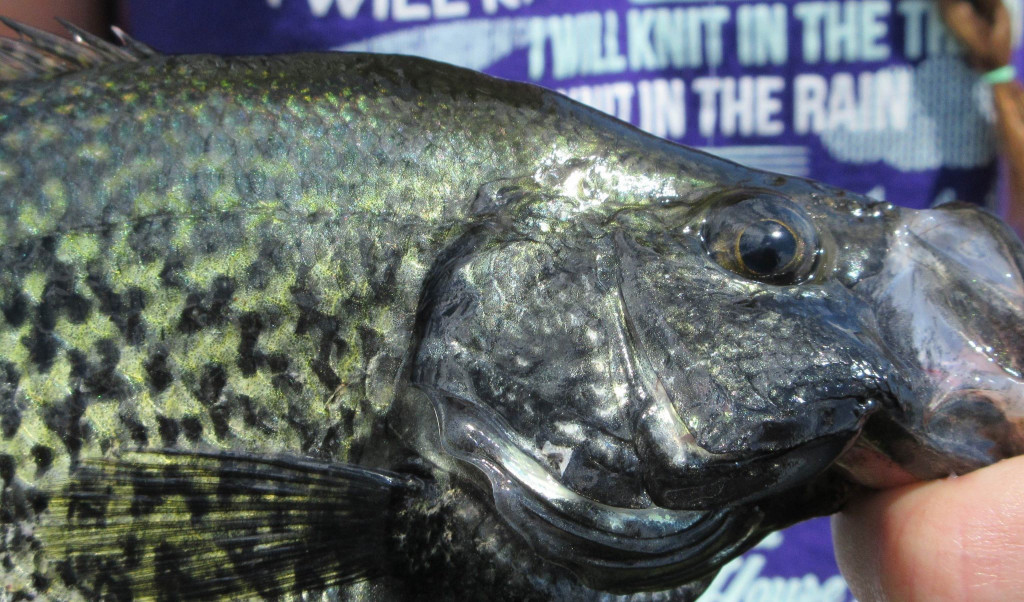You may recall a couple of my previous blog posts about hybrid fish, Hybrids, Hybrids, More Sunfish. My intent with those posts was to call attention to some of the interesting fish you likely will encounter in Nebraska waters. In addition I hoped to point out some tips on fish identification.
You may have noticed the “theme” in those previous blog posts being hybrids of the sunfish family, Centrarchidae. More specifically I blogged about hybrids within the genus Lepomis which includes sunfish like bluegills, redears, pumpkinseeds, green sunfish, etc.
I want to blog one more time about hybrids within the sunfish family; this time crappies.
There are two species of crappies, black and white. Both are common in Nebraska and both species often are found in the same waterbody. Black crappies tend to do better in smaller waters, waters with good water clarity and at least some aquatic vegetation. White crappies tend to dominate in larger waters, waters with more turbidity, and less aquatic vegetation but cover in other forms, especially woody cover.
As I mentioned, we often see both crappie species in the same waterbody and at times we even see one species dominate under certain water level and water conditions. A few years later, habitat conditions change and the species composition between crappies will change as well.
To complicate that, black and white crappies readily hybridize. I cannot tell you the incidence of hybridization in Nebraska crappie populations, but it occurs. Genetic analysis would be necessary to verify hybridization and well, who is going to go to the trouble to collect the tissue samples necessary to identify every crappie? To keep it simple, when in doubt, count dorsal spines and then “call ’em as you see ’em”. Crappies with five or six dorsal spines would be white crappies, seven or eight dorsal spines are blacks. If you see other characteristics like coloration or body shape that make you think the identity is one species while the dorsal spine count suggest otherwise, well, that is probably a hybrid.
Black crappies are more round, pan-shaped, while white crappies tend to be more elongated. In addition, both species have black speckling on a light background, but white crappies can have some faint vertical bars.
OK, to make this visual, again. Here is my mashup:
Cannot really tell that middle fish was a hybrid, can you? I must confess, the only reason I know it was a hybrid is because it was caught from a waterbody where hybrid crappies were stocked. That is why I say count the dorsal spines and make the call. Or, just call ’em crappies and leave it at that.
I would have to say I see a surprising amount of crappies misidentified. Really, it don’t mean nothing. Crappies are crappies, and the two species are very similar. But, I will say this: Don’t rely on coloration! During the spawn, even white crappies can be very dark.
Did I say, “count the dorsal spines”?
The post Hybrids, Crappies appeared first on Nebraskaland Magazine.


















